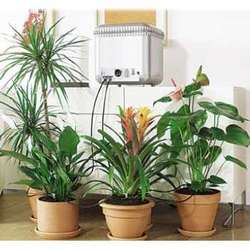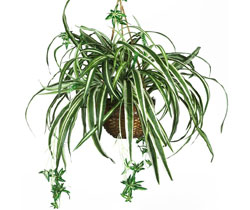
Our environment affects our mental and physical and health. The mere presence of a lone Areca Palm or Dragon Tree sitting proudly in the corner of the living room is uplifting to gaze upon after a hard day at work. But, with a bit more thought and effort regarding placement, arrangement and interaction of your houseplants placed strategically throughout your home, you will reap the benefits similar to those received from being outdoors in nature.
Plant for all light levels
Stuck on your traditional favourites? Be open-minded and rest easy; there are air-purifying houseplants suited or adaptable to every level of light in your home or office., and some experimentation will convince you there is no need to limit your plant sanctuary to one sunny windowsill.
Does the plant fit the location?
Beyond light and watering requirements, common sense, aesthetics and intuition will play a role in deciding where you place your houseplants. For example, avoid placing a spiky plant where it would seem to be waiting to ambush someone with a poke, and avoid elevating a large plant on a platform too high where it threatens to tumble down on an unsuspecting passerby. Consider the plant’s overall size, texture and form, as well as the shape, texture and colour of its foliage. Use these traits to place plants where they look great, and decide if these characteristics feel right for the potential location.
Plants for Study, Plants for High-Energy
The diversity of plant traits and textures means you can easily create an energy-balancing grouping of plants in multiple pots or within a single pot. You can arrange your diverse group to create the rejuvenating energy of a miniature forest; taller plants suggest the role of trees, while short, full plants act as shrubs or ferns, and vining houseplants such as an ivy mimic the forest floor.
This type of foresty combination creates a calming energy generally well-suited to entries, living rooms, bedrooms, study spaces, patios, and meditation spaces.
Groupings that focus on contrasting colours, textures and shapes are great for areas where a high-energy feel is desired; try Burgundy Rubber Plant, Sansevieria and Areca Palm together. Arrangements of plants with softly textured or dainty leaves, in various shades of green (African Violet and Boston Fern) are very relaxing in the bedroom or near the bathtub.
Spacing your plants throughout your home or office also brings a sense of restoration and reconnection to your spaces, similar to the refreshing experience of a walk in the woods.
Feng Shui and Your Plants
Place plants in the corners of your rooms. Plants bring oxygen into the room and circulate positive energy, which enhances mental and physical health. Plants with rounded leaves are ideal, feng shui-wise.
Remove dried flowers or anything dead in the home; dried flowers represent death, and suck energy from the space, whereas live plants and fresh flowers generate energy.
In the Bedroom
If you keep a tv, digital clock, phone, computer, or other electrical devices in your room, cover them with a silk sheet and, if possible, unplug them before bed. Add a Peace Lily plant to absorb some of the electrical energy.
For All Of Your Spaces
For the forgetful waterer, slow-growing succulents like Echeverias are hardy and drought-tolerant companions.
For plants that need high humidity, try cute terrariums! They make fabulous home decor and give your home a stylish showpiece. Just be warned! Once you build one terrarium, you’ll want to build several more. Try Polka Dot Plants as a wonderful starter plant. You’ll adore the look!
Houseplant Care
Keeping your houseplants alive and thriving is no secret! The key is to replicate the plant’s natural growing environment indoors by giving the plant the light, humidity, and water it prefers. Tropical houseplants enjoy a more humid environment while succulents prefer dry and arid conditions. Choosing the right plant for your space starts by assessing the light conditions in your home. Unlike your outdoor plants, your houseplants want indirect light; too much direct light can scorch your indoor plants.
South- or east-facing windows are ideal for bright light to medium light houseplants. Have a look at:
- the fabulous Croton,
- fast-growing Spider plant
- Ponytail Palm
- Jade plants.
- For the indoor gardener with dirt under their nails and a sunny window, we recommend the trendsetting Fiddle Leaf Fig or the breathtaking Prayer plant.
If light is hard to come by in your home, we suggest our Low Light houseplants. These houseplants prefer to be a few feet away from your window or protected from direct light by a sheer curtain. Popular options include the Cast Iron plant, the serene Peace Lily, the air purifying ZZ plant, and the decorated foliage of the Chinese Evergreen.
